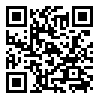Tue, Apr 8, 2025
[Archive]
Volume 19, Issue 5 (Suppl- 2021)
IJRM 2021, 19(5): 36-36 |
Back to browse issues page
Download citation:
BibTeX | RIS | EndNote | Medlars | ProCite | Reference Manager | RefWorks
Send citation to:



BibTeX | RIS | EndNote | Medlars | ProCite | Reference Manager | RefWorks
Send citation to:
Mobarak H, Heidarpour M, Rahbarghazi R, Nouri M, Mahdipour M. K-36 Potential regenerative effects of amniotic-fluid derived exosomes on the rat model of azoospermia. IJRM 2021; 19 (5) :36-36
URL: http://ijrm.ir/article-1-2766-en.html
URL: http://ijrm.ir/article-1-2766-en.html
1- Department of Clinical Sciences, Faculty of Veterinary Medicine, Ferdowsi University of Mashhad, Mashhad, Iran.
2- Stem Cell Research Center, Tabriz University of Medical Sciences, Tabriz, Iran. Department of Applied Cell Sciences, Faculty of Advanced Medical Sciences, Tabriz University of Medical Sciences, Tabriz, Iran.
3- Stem Cell Research Center, Tabriz University of Medical Sciences, Tabriz, Iran. Department of Reproductive Biology, Faculty of Advanced Medical Sciences, Tabriz University of Medical Sciences, Tabriz, Iran.
2- Stem Cell Research Center, Tabriz University of Medical Sciences, Tabriz, Iran. Department of Applied Cell Sciences, Faculty of Advanced Medical Sciences, Tabriz University of Medical Sciences, Tabriz, Iran.
3- Stem Cell Research Center, Tabriz University of Medical Sciences, Tabriz, Iran. Department of Reproductive Biology, Faculty of Advanced Medical Sciences, Tabriz University of Medical Sciences, Tabriz, Iran.
Abstract: (219 Views)
Any defect during the spermatogenesis process may cause temporary or permanent male infertility. Cell-free therapies and by-products such as exosomes have been used as alternative modalities for the treatment of tissue injuries. There is no data on the use of extracellular vesicles to restore male fertility. This study aimed to explore the therapeutic effects of amniotic fluid-derived extracellular vesicles including exosomes (AF-Exos) on the recovery of sperm production capacity in a rat model of azoospermia. Exosomes were isolated from amniotic fluid samples via ultracentrifugation and characterized by scanning and transmission electron microscopy (SEM and TEM), dynamic light scattering (DLS), and western blotting techniques. The induction of non-obstructive azoospermia (NOA) in rats was performed by intratesticular administration of 5 mg/kg/testes Busulfan. Azoospermia was confirmed with histological and spermiogram analysis. AF-Exos samples (10 and 40 μg exosomal protein) were injected into the testes of NOA rats. Two months after intervention, the spermatogenesis rejuvenation was evaluated via histopathology (H & E staining), spermiogram, and hormonal analysis. The expression level of a regeneration marker (OCT-3/4) was also studied via immunohistochemistry staining and the number of spermatogonial progenitors was as well evaluated. AF-derived Exos showed sphere-shaped morphology with 50 ± 7.521 nm mean diameter and -7.16 mV zeta potential, and are positive in specific surface markers (CD63, CD9, and CD81). Histopathological and spermiogram data revealed that the spermatogenesis index and sperm parameters were significantly improved after AF-Exos injection compared to azoospermic groups. Also, after AF-Exos injection the OCT-3/4+ cells were increased in NOA rats exhibited spermatogenesis restoration. Both doses of exosome (10 and 40 μg) restored the testicular function in NOA rats. Except in a high dose of AF-Exos (40 μg) for testosterone and FSH, no statistically significant differences were found regarding hormonal levels post-exosome injection. Our study demonstrated that AF-Exos have the potential capacity to facilitate regeneration in the spermatogenesis process and improve sperm quality through paracrine effects via releasing potential restoratives factors into the site of injury. This study provides a novel therapeutic insight on the NOA treatment.
Keywords: .
Type of Study: Congress Abstract |
Subject:
Reproductive Psycology
| Rights and permissions | |
 |
This work is licensed under a Creative Commons Attribution-NonCommercial 4.0 International License. |




